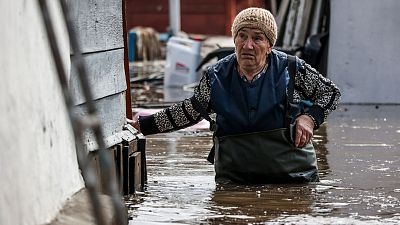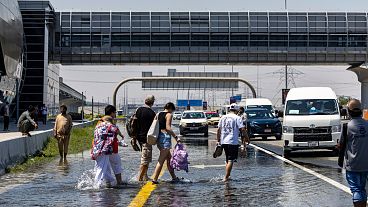Popular brands like Maltesers, Lindt and Ferrero Rocher have risen sharply in price compared to last year
Easter egg prices are higher this year as climate change hits cacao crops.
Popular brands like Maltesers, Lindt and Ferrero Rocher have jumped upwards of 50 per cent in price compared to last year, British consumer champion Which? found.
Rising temperatures and humid weather conditions have stressed and damaged crops in West Africa, which produces more than 70 per cent of the global cocoa supply.
Cocoa prices more than doubled in the last year, from €2,220 per tonne in February 2023 to a record high of €5,490. Sugar prices are also rising.
Mondelez, which owns Easter egg staple Cadbury, has been relying on price increases to counter the surge in cocoa prices. It acknowledged price increases of up to 15 per cent within its chocolate category in 2023. Even higher prices are likely in 2024.
How is climate change affecting cacao trees?
Cacao farmers have been hit by adverse weather and plant diseases in recent months.
Ivory Coast and its neighbour Ghana together meet more than half of the world’s demand for cacao.
As the major cacao season, which began in October 2023, draws to a close at the end of March, some crops have been devastated by fungal black pod disease. Its spread is aided by months of soggy weather.
Another major problem in Ghana and Ivory Coast is cacao swollen shoot virus, spread by insects. It is usually dealt with by cutting down infected trees entirely.
The wet conditions in West Africa are being blamed for damaging crop yields, which is pushing cacao prices higher.
Further pressure came when West Africa was struck by a heatwave in mid-February, which weakened trees already damaged by rainfall. Temperatures breached 40C in some regions, prompting heat warnings in Ghana and Nigeria.
A study by World Weather Attribution (WWA) - a research group composed of international climatologists - found that last month’s heatwave was made 10 times more likely and 4C hotter by human-caused climate change.
What’s the future of cacao farming in West Africa?
Increasing temperatures and declining rainfall are already reducing cacao output - a trend that’s likely to continue into the future.
If global warming rises to 2C above pre-industrial levels, devastating heatwaves like the one seen in February will occur around once every two years, according to WWA. They will also become up to 3.4C hotter.
Under the current climate, the heatwave was a one-in-10-year event. Without climate change, hot weather events like this would happen less than once every 100 years.
Drought resistant seeds and regenerative farming techniques could help the industry to cling on.
But as climate patterns and regions shift, farmers are also being pushed to higher altitudes to cultivate cacao. This leads to deforestation and ecosystem destruction that further contributes to climate change.
New EU deforestation regulations coming in December 2024 could reduce imports from these regions as supply chains are tracked.
Production could shift to other regions like South America, though they’re unlikely to fill the gap and could be impacted by similar weather changes.
It's just one outcome of the growing climate crisis and a reminder of the need to urgently reduce human-caused emissions.



